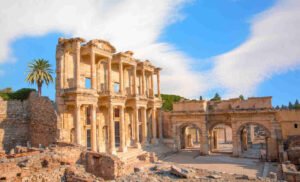The vestiges of the Crusaders in the Near East remind us of the known Crusades (nine in total), in the central centuries of the Middle Ages (1096-1291). It was a period of fierce battles by Christians and Muslims, in which the former tried to recover the Holy Land for Christianity (and more specifically, for Catholicism, as they were promoted by Western monarchs and the Latin Church). For a time they succeeded, but they also experienced tragic defeats. In this post, we show you some examples of places directly or indirectly related to the Crusades, which Mandala Tours can take you to discover.
Holy Land: Israel and Jordan
Undoubtedly, to fully discover what the Crusades meant, your trip should inevitably take you to Israel, as it is known as the Holy Land for Christians (and the Promised Land for Jews). In 1099, during the First Crusade, the crusaders’ troops took the city and established the Kingdom of Jerusalem, which lasted for about two centuries.
The Church of the Holy Sepulchre, where Jesus was crucified and his empty tomb is preserved, is the most sacred place of Christianity, and is indirectly related to the Crusades: although the origins of the temple are Paleo-Christian and it was later rebuilt by Byzantines, the First Crusade had, among other objectives, the control and protection of this sanctuary. Therefore, it was expanded again, and numerous traces of the Crusaders can be traced in the temple.
However, the most spectacular place from the time of the Crusaders is Acre, which they called Saint John of Acre. This city on the Israeli coast was during that period a great port city and the de facto capital at different times. Its old city is declared a World Heritage Site by UNESCO thanks to the good conservation of its Citadel and its spectacular system of galleries and underground spaces, including a dungeon.
In neighboring Jordan, there are also castles from the time of the Crusaders. This is because the frontier of the Kingdom of Jerusalem extended here, and therefore, some fortresses were built (or reused) in strategic positions. This is the case of the castles of Karak, Ajloun, or Shawbak.
Vestiges of the crusaders outside the Holy Land
If you are passionate about this period, you can also discover other vestiges of the Crusaders outside what is known today as the Holy Land. And many of them can be visited with the agencies of Mandala Tours, as they are spread across countries like Egypt or Turkey.
An example is the so-called Pharaoh’s Island, under Egyptian sovereignty but in a strategic position, very close to the Jordanian coast. In fact, it is believed that the Crusaders could have built the castle that can be visited today on this small island, as a surveillance post of the route that linked Cairo and Damascus, and which passed through Aqaba. Other historians refute it, but it does seem clear that during the 12th century this enclosure was used as a military enclave in the context of the offensives and counteroffensives with the Ayyubids, who tried to push back or expel the Crusaders.
Finally, your trip through Istanbul will also refer to the warriors of the Fourth Crusade, but not precisely as promoters of constructions but quite the opposite: in 1204 they sacked the city, which resulted in the loss or transfer of important elements to other places. One of the most affected places was the Hippodrome, which was stripped of large sculptures, like the horses (today, in the Basilica of San Marco in Venice).





